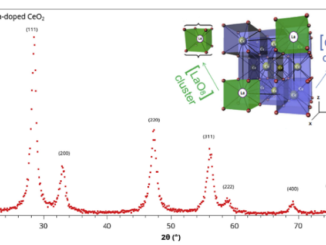
Experimental and theoretical study to explain the morphology of CaMoO4 crystals
Abstract: CaMoO4 crystals were prepared by a controlled co-precipitation method and processed in a domestic microwave-assisted hydrothermal system with two different surfactants (ethyl 4-dimethylaminobenzoate and 1,2,4,5-benzenetetracarboxylic dianhydride). The corresponding structures were characterized by X-ray diffraction and Rietveld refinement techniques, Fourier transform infrared spectroscopy, ultraviolet–visible absorption spectroscopy, and photoluminescence measurements. Field emission scanning electron microscopy was used to investigate the morphology of the as-synthesized aggregates. The structure, the surface stability of the (001), (112), (100), (110), (101), and (111) surfaces of CaMoO4, and their morphological transformations were investigated through systematic first-principles calculations within the density functional theory method at the B3LYP level. Analysis of the surface structures showed that the electronic properties were associated with the presence of undercoordinated [CaOx] (x = 5 and 6) and [MoOy] (y = 4 and 3) clusters. The relative surfaces energies were tuned to predict a complete map of the morphologies available through a Wulff construction approach. The results reveal that the experimental and theoretical morphologies obtained coincide when the surface energies of the (001) and (101) surfaces increase, while the surface energy of the (100) facet decreases simultaneously. The results provide a comprehensive catalog of the morphologies most likely to be present under realistic conditions, and will serve as a starting point for future studies on the surface chemistry of CaMoO4 crystals.
Authors: F. K. F. Oliveira, M. C.Oliveira, L. Gracia, R. L.Tranquilina, C. A. Paskocimas, F. V. Motta, E. Longo, J.Andrés, M. R. D. Bomio
Journal of Physics and Chemistry of Solids
Volume 114, March 2018, Pages 141-152
DOI: https://doi.org/10.1016/j.jpcs.2017.11.019
PDF: Experimental and theoretical study to explain the morphology of CaMoO4 crystals




